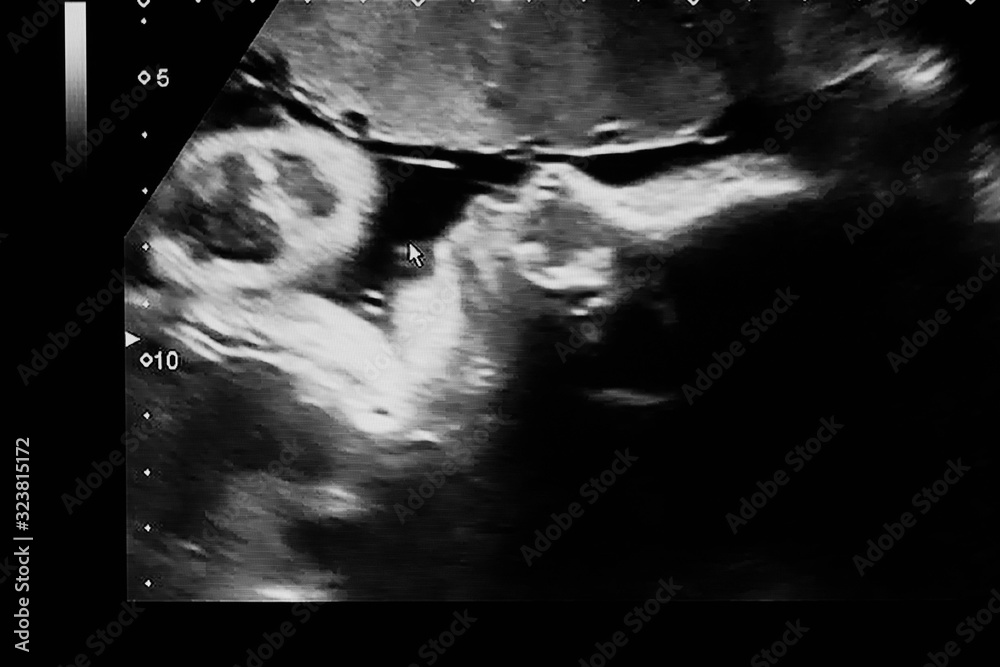35 WEEKS PREGNANT AND BABY DEVELOPMENT

Hey expecting moms! Congrats, on embarking on the journey of pregnancy. Each week brings its mix of excitement, challenges and happiness. Today lets talk about the week of pregnancy—a milestone in the “week by week pregnancy” calendar. When you’re 35 weeks pregnant you’re getting closer to meeting your one!. Before that magical moment arrives lets dive into the developments happening with your baby and what signs and symptoms you might be experiencing. Get ready, for a week
Your Baby at 35 Weeks:

- Size and Weight: By the time you’ve reached 35 weeks, your little one is truly blossoming! On average, your baby now measures about 18 inches (45 cm) from head to toe and weighs approximately 5.5 pounds (around 2.5 kilograms). Imagine holding a honeydew melon in your arms—that’s roughly the size of your baby now!
- Developed Reflexes: One of the cutest things about this week is that your baby’s reflexes are becoming more pronounced. You might feel tiny kicks and jabs as they explore their cozy surroundings inside your womb, responding to sounds, light, and even your touch.
- Practicing Breathing: Breathing is a crucial skill, even before birth! At 35 weeks, your baby continues to practice breathing movements, inhaling and exhaling amniotic fluid, which helps in strengthening their respiratory system for the big day.
- Growing Nails and Hair: Your baby’s adorable little features are becoming more defined. This week, their nails have grown longer, and some babies might even have a head full of soft hair. How enchanting is that?
- Brain Development: As you inch closer to your due date, your baby’s brain is working overtime, growing and developing rapidly. This period is essential for brain maturation, setting the stage for learning, memory, and sensory processing after birth.
- Final Positioning: Many babies settle into a head-down position by this week, preparing for their grand entrance into the world. However, some might take a bit longer, so don’t fret if your little one is still doing somersaults inside!
Changes in Your Body: 35 Weeks Pregnant Symptoms
- Shortness of Breath: As your baby continues to grow and take up more space inside your abdomen, you might notice that you’re feeling a bit more breathless than usual. This happens because your expanding uterus puts pressure on your diaphragm, limiting its range of motion.
- Braxton Hicks Contractions: Ah, those practice contractions! By 35 weeks, you might be experiencing Braxton Hicks contractions more frequently. These irregular contractions are your body’s way of preparing for labor, but don’t worry—they’re typically painless and sporadic.
- Pelvic Pressure: You might feel increased pressure in your pelvic region as your baby settles deeper into your pelvis in preparation for birth. This can sometimes make walking or even simple movements a tad more challenging, but it’s a sign that your body is getting ready.
- Swelling: Some moms-to-be notice swelling, particularly in their hands, ankles, and feet. This swelling, known as edema, is quite common in the later stages of pregnancy due to increased fluid retention. Elevating your feet and staying hydrated can help alleviate discomfort.
- Heartburn and Indigestion: As your baby grows, the space available for your stomach diminishes, leading to increased instances of heartburn and indigestion. Eating smaller, more frequent meals and avoiding spicy or acidic foods might offer some relief.
- Fatigue: Carrying around the extra weight of pregnancy can be exhausting! You might find yourself feeling more tired than usual as your body works overtime to nurture and support your growing baby. Don’t hesitate to rest and prioritize self-care during this time.
- Frequent Urination: It seems like those bathroom trips never end, right? Your baby’s position and the pressure on your bladder might lead to more frequent urges to urinate. While it’s essential to stay hydrated, try to reduce fluids before bedtime to get some uninterrupted sleep.
Coping Strategies: Managing Challenges at 35 Weeks Pregnant
- Stay Active with Gentle Exercise: While it might feel tempting to stay sedentary, incorporating gentle exercises like prenatal yoga or walking can work wonders. Not only does it help alleviate some common discomforts like swelling and back pain, but it also boosts your mood and prepares your body for labor. Remember, it’s not about intensity but consistency and listening to your body’s cues.
- Practice Relaxation Techniques: With the hustle and bustle of preparing for your baby’s arrival, it’s crucial to carve out moments of relaxation. Explore relaxation techniques such as deep breathing exercises, meditation, or even a warm bath with soothing essential oils. These practices can help reduce stress, promote better sleep, and create a tranquil environment for both you and your baby.
- Seek Support and Stay Informed: Remember, you’re not alone on this journey! Surround yourself with a supportive network of family, friends, or fellow expectant mothers who can offer guidance, share experiences, and lend a helping hand. Additionally, stay informed about your pregnancy by attending prenatal classes, reading reliable resources, and discussing any concerns with your healthcare provider. Knowledge empowers you to make informed decisions and navigate challenges with confidence.
Embracing these coping strategies can make a significant difference as you navigate the complexities and joys of the 35th week of pregnancy. Remember to prioritize self-care, trust your instincts, and cherish each moment as you prepare to welcome your precious little one into the world!
35 Weeks Pregnant Belly
As you reach the 35th week of pregnancy, your belly becomes a testament to the miraculous journey you’re on. It’s fascinating to witness the changes—a beautiful blend of anticipation and wonder. Your belly continues to expand, creating a snug haven for your growing baby. You might notice your skin stretching, potentially leading to itchiness. Remember to moisturize regularly with a gentle lotion or oil to nourish your skin and soothe any discomfort. Embrace the lines and marks that appear; they’re the badges of motherhood, a symbol of the incredible life you’re nurturing within.
Furthermore, consider investing in supportive maternity wear that provides comfort and eases pressure on your belly and back. Opt for breathable fabrics and adjustable bands that accommodate your changing shape. As you marvel at your evolving belly, take moments to connect with your baby. Gently massage your belly, play soothing music, or engage in quiet moments of reflection. These gestures foster a deeper bond with your little one and offer a sense of calm amidst the whirlwind of emotions. Cherish this time, celebrate your belly, and remember, every stretch mark tells a story—a story of love, resilience, and the beautiful journey of motherhood.
35 Weeks Pregnant Ultrasound – What to Expect

- Visualizing Baby’s Growth: During a 35-week ultrasound, you’ll be amazed to see how much your baby has grown since your last scan! The ultrasound provides a clear view of your baby’s size, positioning, and overall development, offering a glimpse of their tiny fingers, toes, and facial features.
- Checking Amniotic Fluid Levels: One crucial aspect that healthcare providers assess during this ultrasound is the amniotic fluid levels surrounding your baby. Adequate levels of amniotic fluid are essential for cushioning your baby and facilitating their movements. Abnormal levels might require further evaluation or intervention.
- Monitoring Baby’s Position: By 35 weeks, most babies settle into a head-down position in preparation for birth. The ultrasound helps determine whether your baby is in the optimal position for a vaginal delivery. If your baby is breech or in a different position, your healthcare provider might discuss potential strategies or interventions.
- Assessing Placental Function: The ultrasound evaluates the placenta’s position and function, ensuring it continues to provide essential nutrients and oxygen to your baby. Any signs of placental abnormalities, such as placenta previa or placental insufficiency, require careful monitoring and potential intervention.
- Identifying Potential Pathologies: While the majority of 35-week ultrasounds reveal normal findings, healthcare providers remain vigilant for any potential pathologies. They assess your baby’s organs, heart, and overall growth, looking for signs of abnormalities or developmental concerns.
- Measuring Baby’s Biophysical Profile: Some healthcare providers might perform a biophysical profile during the ultrasound, evaluating specific parameters like fetal movement, muscle tone, breathing movements, and amniotic fluid volume. This comprehensive assessment provides valuable insights into your baby’s well-being and development.
During your 35-week ultrasound, remain engaged, ask questions, and trust in your healthcare provider’s expertise. This ultrasound offers a precious opportunity to witness your baby’s growth and ensure they’re thriving as you approach the final weeks of pregnancy. Embrace the experience, cherish the moments, and remember, you’re on the cusp of meeting your precious little miracle!
10 Easy Tips for 35 Weeks Pregnant:
- Prioritize Rest: As you near the end of your pregnancy journey, rest becomes paramount. Listen to your body’s cues and prioritize quality sleep and relaxation to recharge your energy.
- Stay Hydrated: Drink plenty of water throughout the day to stay hydrated and support your body’s changing needs. Aim for at least eight glasses daily to maintain optimal hydration levels.
- Maintain Gentle Exercise: Engage in light exercises like walking, swimming, or prenatal yoga to promote circulation, alleviate discomfort, and prepare your body for labor. Remember, it’s about staying active, not pushing your limits.
- Eat Nutrient-Dense Foods: Fuel your body and baby with nutrient-dense foods rich in vitamins, minerals, and essential nutrients. Incorporate a balanced diet with fruits, vegetables, lean proteins, and whole grains for a healthy pregnancy.
- Wear Comfortable Clothing: Embrace comfortable maternity wear that accommodates your growing belly and supports your changing body. Opt for breathable fabrics and adjustable garments to stay comfortable throughout the day.
- Practice Pelvic Floor Exercises: Strengthen your pelvic floor muscles with Kegel exercises to support labor and postpartum recovery. Incorporate regular pelvic floor exercises into your daily routine for optimal muscle tone.
- Attend Prenatal Appointments: Stay connected with your healthcare provider by attending regular prenatal appointments. Discuss any concerns, ask questions, and ensure you’re on track for a healthy pregnancy and delivery.
- Stay Informed: Educate yourself about labor, delivery, and postpartum care by attending childbirth classes, reading reliable resources, and discussing your birth plan with your healthcare provider. Knowledge empowers you to make informed decisions and navigate challenges with confidence.
- Create a Relaxing Environment: Establish a soothing and calming environment at home by practicing relaxation techniques, such as deep breathing exercises, meditation, or listening to gentle music. Create a tranquil space that promotes relaxation and reduces stress.
- Seek Support: Surround yourself with a supportive network of family, friends, or fellow expectant mothers who can offer guidance, share experiences, and lend a helping hand. Embrace the journey together, celebrate milestones, and cherish the final weeks of pregnancy.
Commonly Asked Questions About 35 Weeks Pregnant
- Q1: What are the signs that my body is preparing for labor at 35 weeks?
- A1: At 35 weeks pregnant, you might notice several signs indicating that your body is gearing up for labor. These signs can include Braxton Hicks contractions becoming more frequent, increased pelvic pressure as your baby descends into the birth canal, and a noticeable “lightening” as your baby drops lower in your pelvis. Additionally, you might experience a surge in energy or nesting instincts, signaling that your body is preparing for the upcoming birth.
- Q2: Is it normal to feel more fatigued during the 35th week of pregnancy?
- A2: Absolutely! Feeling more fatigued during the 35th week of pregnancy is entirely normal. Your body is working overtime to nurture and support your growing baby, leading to increased energy demands. Listen to your body, prioritize rest, and take breaks as needed throughout the day. Embracing moments of relaxation and conserving your energy can help alleviate fatigue and promote overall well-being.
- Q3: How can I differentiate between Braxton Hicks contractions and real labor contractions at 35 weeks?
- A3: Distinguishing between Braxton Hicks contractions and real labor contractions can be challenging. Braxton Hicks contractions are typically irregular, sporadic, and often described as tightening sensations that come and go. In contrast, real labor contractions become more regular, intense, and frequent over time, leading to progressive cervical changes. Pay attention to the duration, frequency, and intensity of contractions, and consult your healthcare provider if you’re uncertain or experience any concerning symptoms.
- Q4: What should I do if I notice reduced fetal movement at 35 weeks?
- A4: If you notice reduced fetal movement at 35 weeks, it’s essential to contact your healthcare provider immediately. While it’s normal for fetal movement patterns to change as your baby grows and runs out of room, any significant decrease in movement warrants prompt evaluation to ensure your baby’s well-being. Your healthcare provider might recommend monitoring fetal movements, undergoing non-stress tests, or performing an ultrasound to assess your baby’s health and vitality.
- Q5: How can I alleviate swelling in my hands, ankles, and feet at 35 weeks pregnant?
- A5: Alleviating swelling, also known as edema, at 35 weeks pregnant involves several strategies. Elevate your legs whenever possible, avoid standing or sitting for extended periods, and incorporate gentle exercises like walking to promote circulation. Additionally, stay hydrated, consume a balanced diet rich in potassium, and wear comfortable, supportive shoes. If swelling persists or becomes severe, consult your healthcare provider for further evaluation and guidance.
35 Weeks Pregnant Checklist
- Prenatal Appointments: Ensure you attend all scheduled prenatal appointments and discuss any concerns or questions with your healthcare provider.
- Hospital Bag: Begin packing your hospital bag with essentials for both you and your baby. Include comfortable clothing, toiletries, nursing bras, and baby essentials like diapers and blankets.
- Birth Plan: Finalize your birth plan and discuss your preferences with your healthcare provider and birth support team.
- Childbirth Classes: Attend childbirth classes to prepare for labor, delivery, and postpartum care. Familiarize yourself with breathing techniques, pain management strategies, and labor positions.
- Baby’s Nursery: Set up your baby’s nursery, wash and organize baby clothes, blankets, and essentials, ensuring everything is ready for their arrival.
- Car Seat Installation: Install your baby’s car seat correctly and familiarize yourself with its features and safety guidelines.
- Postpartum Care: Research and prepare for postpartum care essentials, including sanitary pads, nursing supplies, comfortable clothing, and breastfeeding accessories.
- Support Network: Identify and communicate your support network, including family, friends, or postpartum doulas who can assist during labor, delivery, and postpartum recovery.
- Maternity Leave: Confirm your maternity leave plans with your employer, discuss transition arrangements, and ensure all necessary paperwork is completed.
- Pediatrician: Select a pediatrician for your baby, schedule an initial appointment, and familiarize yourself with their practice policies, location, and contact information.
- Breastfeeding Resources: Research local breastfeeding resources, support groups, and lactation consultants to assist with breastfeeding initiation and challenges.
- Emergency Contacts: Compile a list of emergency contacts, including your healthcare provider’s information, hospital preferences, and support network contacts, for easy access during labor and delivery.
- Meal Prep: Prepare and freeze nutritious meals and snacks for postpartum recovery, ensuring you have convenient and healthy options readily available.
- Relaxation Techniques: Practice relaxation techniques, such as deep breathing exercises, meditation, or prenatal yoga, to manage stress, promote relaxation, and prepare for labor.
- Finalize Baby Name: If you haven’t already, finalize your baby’s name with your partner and share your chosen name with family and friends.
In Conclusion, at 35 Weeks Pregnant:
As you journey through the remarkable 35th week of pregnancy, you’re undoubtedly feeling a blend of excitement, anticipation, and wonder. Your baby is flourishing, growing approximately as large as a honeydew melon, and continuing to refine their reflexes, brain development, and positioning for the grand entrance into the world. Meanwhile, your body is undergoing significant transformations, from your expanding belly and potential swelling to preparing for labor with signs like Braxton Hicks contractions and pelvic pressure. It’s a time of both physical changes and emotional preparation, as you finalize your birth plan, assemble essential items for your hospital bag, and create a nurturing environment for your baby’s arrival.
In the midst of these preparations and developments, remember to prioritize self-care, lean on your support network, and embrace each moment as you approach the final weeks of pregnancy. Celebrate the milestones, cherish the fluttering movements, and trust in your body’s incredible ability to nurture and bring forth new life. As you navigate the complexities and joys of the 35th week, know that you’re embarking on one of the most transformative journeys of your life. Embrace the experience, trust your instincts, and prepare to welcome your precious little miracle into the world with love, resilience, and profound joy.
Coming Up 36 Weeks Pregnant: As you venture into the exhilarating journey of 36 weeks pregnant, get ready to witness even more remarkable developments for both you and your precious baby. Your little one is on the verge of reaching full term, preparing for that long-awaited debut with an array of exciting changes. Meanwhile, your body continues its incredible transformation, paving the way for the final stretch of your pregnancy. Stay tuned, because the 36th week promises to be filled with significant milestones, anticipation, and a sprinkle of magical moments as you inch closer to meeting your bundle of joy. Get ready to embrace the wonders of the 36th week and cherish the beautiful journey unfolding before you!


